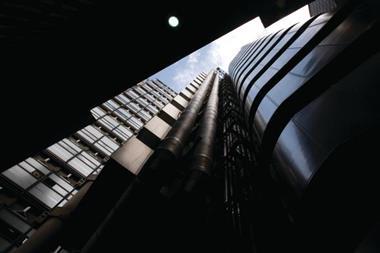The CII exams next month loom large, but there’s still time for last-minute study. These questions from past papers will test your knowledge and help you to hone your skills (Scroll down for the answers)
Question 1: Personal accident policies are “benefit” insurances. What does this mean?
a) They can be assigned for the benefit of another person
b) They allow for a reduced annual premium in the event of no claims being made
c) They pay specified sums irrespective of pecuniary loss
d) Certain extensions of cover are provided free of charge
Question 2: If a payment protection policy pays benefits for 60 days in respect of a 90-day illness, which of these policy structures are feasible? a) 30-day excess; b) 60-day modified franchise; c) 60-day excess; d) 60-day franchise
a) a) and b)
b) c) only
c) a) and d)
d) b) and d)
Question 3: Bob’s trailer caravan suffers a puncture when he runs over a metal spike in the road. The caravan jacknifes, causing Bob to lose control of his car, and he collides with a tree, resulting in damage to both the towing vehicle and the caravan. Bob makes a claim under his caravan insurance in respect of the damage to the caravan. What is the correct position?
a) None of the damage is covered because the accident was caused by an excluded peril (the tyre puncture)
b) The puncture damage to the caravan tyre is excluded but the subsequent impact damage to the caravan is covered
c) All of the damage to the caravan, including the puncture damage to the tyre, is covered
d) If Bob’s car is comprehensively insured, his motor insurer will deal with the claim for damage to the caravan. If not, all of the damage will be dealt with by Bob’s caravan insurer
Question 4: What, if anything, distinguishes the minimum level of compulsory insurance cover under a private car policy from the minimum level of cover required under a motor cycle policy?
a) There is no distinction; both types of policy must provide the same minimum level of cover
b) The private car policy has to provide a higher level of third-party personal injury cover
c) The motor cycle policy has to provide a higher level of third-party personal injury cover
d) The private car policy has to provide a higher level of third-party property damage cover
Question 5: What is the main purpose of the Claims and Underwriting Exchange (CUE) Register?
a) To notify insurers about any outstanding HP interest on a vehicle
b) To help insurers combat fraud by pooling information about previous claims
c) To share information about trends in damage repair costs
d) To help insurers apportion liability for an accident based on previous accidents of a similar nature
Question 6: Cover under the malicious damage peril in a home buildings policy normally excludes
a) Loss or damage caused while the building is unfurnished or unoccupied for more than 30 days
b) The cost of debris removal
c) Damage to walls, gates, fences or hedges
d) Damage caused by minors
Question 7: Under a high net worth contents policy, the usual cover for property taken abroad is on a worldwide basis for
a) Personal possessions for a specified number of days during the insurance period
b) Personal possessions for the entire period of insurance
c) All belongings for a specified number of days during the insurance period
d) All belongings for the entire period of the insurance
Question 8: Loss or damage caused by which of these risks, if any, is normally covered under the subsidence peril in a household buildings policy? a) faulty design; b) structural repair; c) riverbank erosion
a) None, all of these risks are normally excluded
b) b) only
c) a) and c) only
d) All of these risks are normally covered
Postscript
Answers
Question 1: c) They pay specified sums irrespective of pecuniary loss
Question 2: a) a) and b)
Question 3: b) The puncture damage to the caravan tyre is excluded but the subsequent impact damage to the caravan is covered
Question 4: a) There is no distinction; both types of policy must provide the same minimum level of cover
Question 5: b) To help insurers combat fraud by pooling information about previous claims
Question 6: a) Loss or damage caused while the building is unfurnished or unoccupied for more than 30 days
Question 7: d) All belongings for the entire period of the insurance
Question 8: a) None, all of these risks are normally excluded
Hosted by comedian and actor Tom Allen, 34 Gold, 23 Silver and 22 Bronze awards were handed out across an amazing 34 categories recognising brilliance and innovation right across the breadth of UK general insurance.













































No comments yet